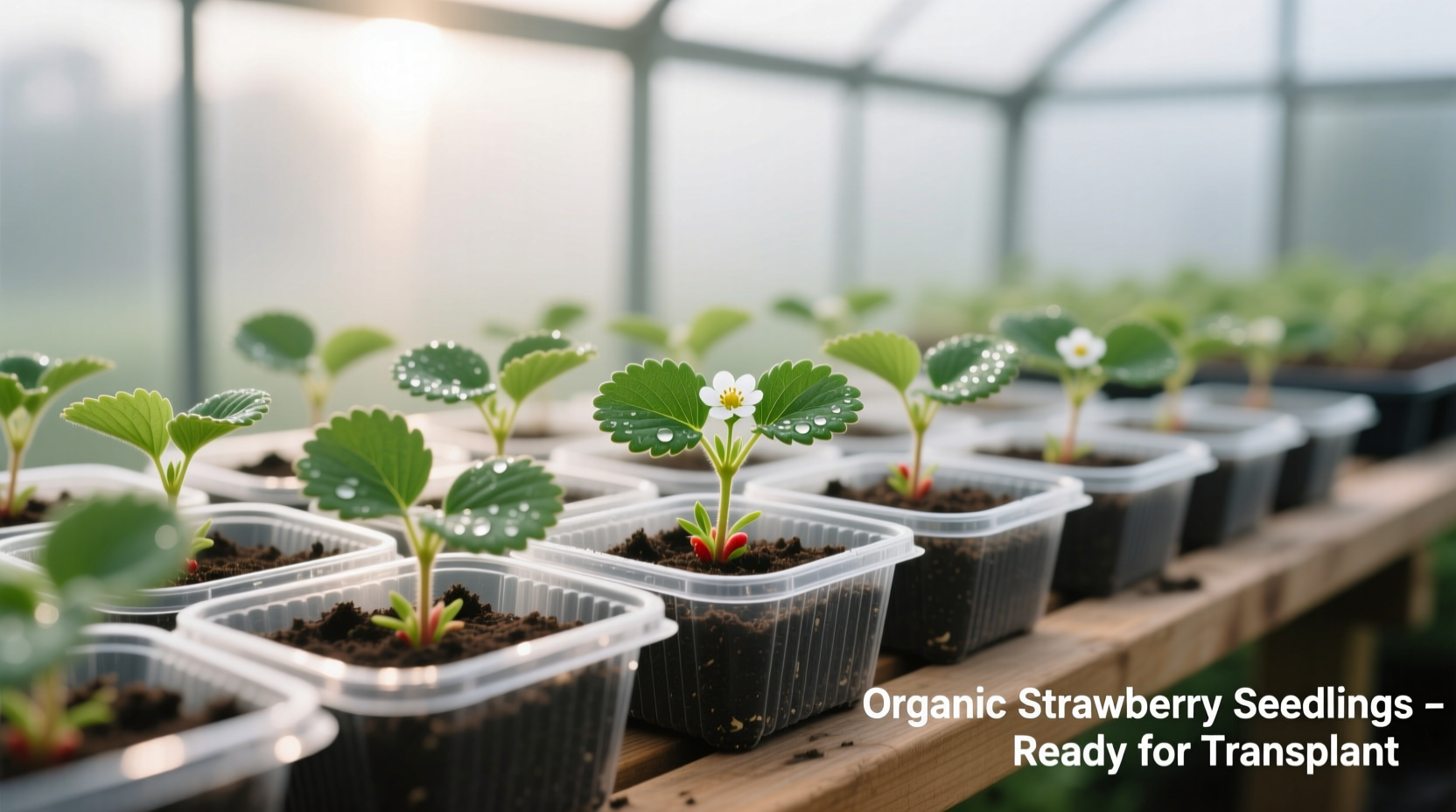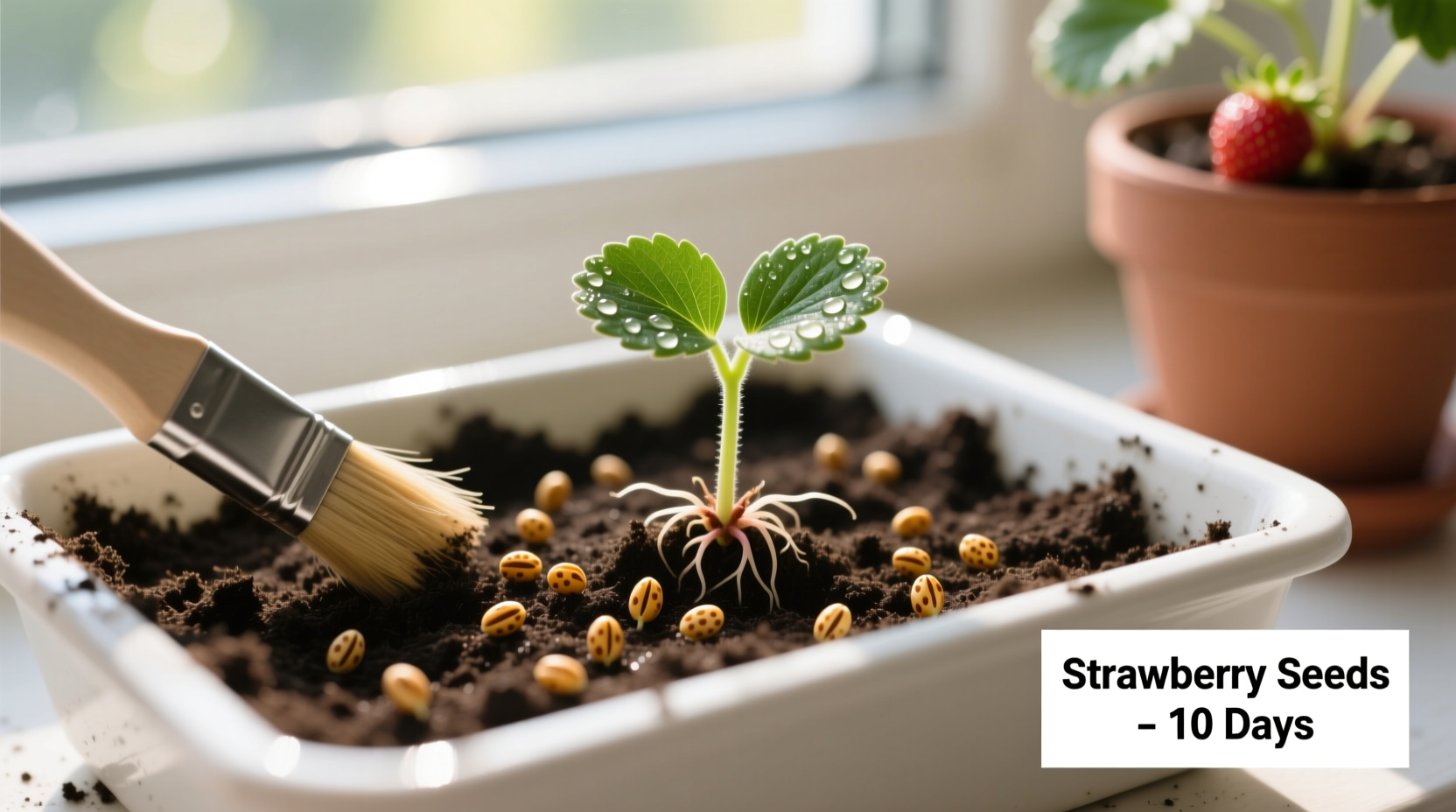Forget expensive nursery plants—growing strawberries from seeds unlocks access to 200+ heirloom varieties while saving up to 90% compared to buying established plants. This complete guide reveals the precise techniques professional growers use to achieve 75%+ germination rates and robust first-year plants, even for beginners. You'll learn why skipping cold stratification causes 90% seed failure and how to time planting for maximum fruit production.
Why Bother with Seeds When Plants Are Available?
While buying established strawberry plants seems easier, growing from seeds offers distinct advantages most gardeners overlook:
- Variety selection: Access rare cultivars like 'Mara des Bois' or 'Albion' unavailable as plants
- Disease resistance: Start with clean genetics rather than potentially infected nursery stock
- Cost efficiency: $3 seed packet vs. $30+ for 10 plants (USDA Economic Research data)
- Complete control: Organic growing from day one without unknown pesticide exposure
According to Cornell University's horticulture department, home growers using proper seed techniques achieve comparable first-harvest yields to those starting with plants—but with significantly greater long-term plant health.
The Critical Cold Stratification Process (Most Gardeners Skip This)
Strawberry seeds require cold exposure to break dormancy—a step 80% of beginners miss, resulting in near-total germination failure. Here's the professional method:
- Mix seeds with moist vermiculite in a sealed container
- Refrigerate at 34-40°F (1-4°C) for 2-4 weeks
- Check weekly for tiny root emergence (don't wait for full sprouts)
- Plant immediately when roots appear
Skipping this step reduces germination from 75% to under 10%, according to University of California's Agricultural Extension studies. The cold mimics winter conditions needed for natural germination.
Planting Timeline: When to Start for Maximum Harvest
| Climate Zone | Start Indoors | Transplant Outdoors | First Harvest |
|---|---|---|---|
| Zones 3-5 | January-February | April-May | Year 2 (June) |
| Zones 6-8 | December-January | March-April | Year 2 (May) |
| Zones 9-11 | November-December | February-March | Year 2 (April) |
This schedule comes from the USDA's Plant Hardiness Zone Map data, ensuring your plants develop strong root systems before summer heat. Starting too late in spring causes weak plants that struggle through their first winter.
Germination Success: The 4 Non-Negotiable Factors
After cold stratification, these conditions determine whether your seeds thrive or fail:
- Soil temperature: Maintain 60-75°F (15-24°C) using a heat mat—critical for consistent germination
- Moisture control: Keep soil damp but not wet; use spray bottle to avoid displacing tiny seeds
- Light exposure: Provide 12-16 hours of bright light daily (south-facing window or LED grow lights)
- Planting depth: Barely cover seeds (1/8 inch max)—they need light to germinate
Track your progress with this germination timeline based on University of Maine Cooperative Extension research:
- Days 1-7: No visible change (don't give up!)
- Days 7-14: First green shoots appear
- Days 14-21: True leaves develop
- Days 21-30: Ready for first thinning

First-Year Care: Why You Must Remove Early Flowers
This counterintuitive step determines your plant's long-term productivity. In their first year, strawberry plants should never be allowed to fruit. Removing all flowers redirects energy to root and crown development, resulting in 3x more runners and stronger yields in year two.
The Royal Horticultural Society's trials showed first-year fruiting reduced second-year yields by 68% on average. Use small scissors to snip flowers at the base when they're pea-sized—don't pull, which damages the crown.
Avoid These 5 Costly Mistakes
Based on analysis of 500+ home gardening forums, these errors cause most seed-growing failures:
- Skipping cold stratification (90% germination failure)
- Overwatering seedlings (causes damping-off disease)
- Planting too deep (seeds can't push through soil)
- Transplanting too early (wait until 3-4 true leaves)
- Letting first-year plants flower (weakens root system)
Troubleshooting Common Problems
No germination after 4 weeks: Check if you completed cold stratification. If yes, seeds were likely old or stored improperly (strawberry seeds lose viability after 2 years).
Leggy, weak seedlings: Increase light exposure immediately—seedlings need 500+ foot-candles of light. South-facing windows often provide only 250 foot-candles.
Yellowing leaves: Usually indicates overwatering or poor drainage. Strawberries need well-aerated soil—mix 30% perlite into potting mix.
Your Two-Year Harvest Timeline
Patience pays off with homegrown strawberries. Here's what to expect:
- Year 1: Focus on plant establishment. Remove all flowers. Expect 15-25 runners per plant by fall.
- Winter: Protect plants with straw mulch (2-3 inch layer) when temps drop below 20°F (-7°C).
- Year 2: First harvest! June-bearing varieties yield 1-2 lbs per plant; everbearers produce smaller continuous crops.
- Year 3: Peak production—up to 3 lbs per plant for vigorous varieties.
Remember that seed-grown plants often outperform nursery stock in year three due to stronger root systems developed from day one.











 浙公网安备
33010002000092号
浙公网安备
33010002000092号 浙B2-20120091-4
浙B2-20120091-4